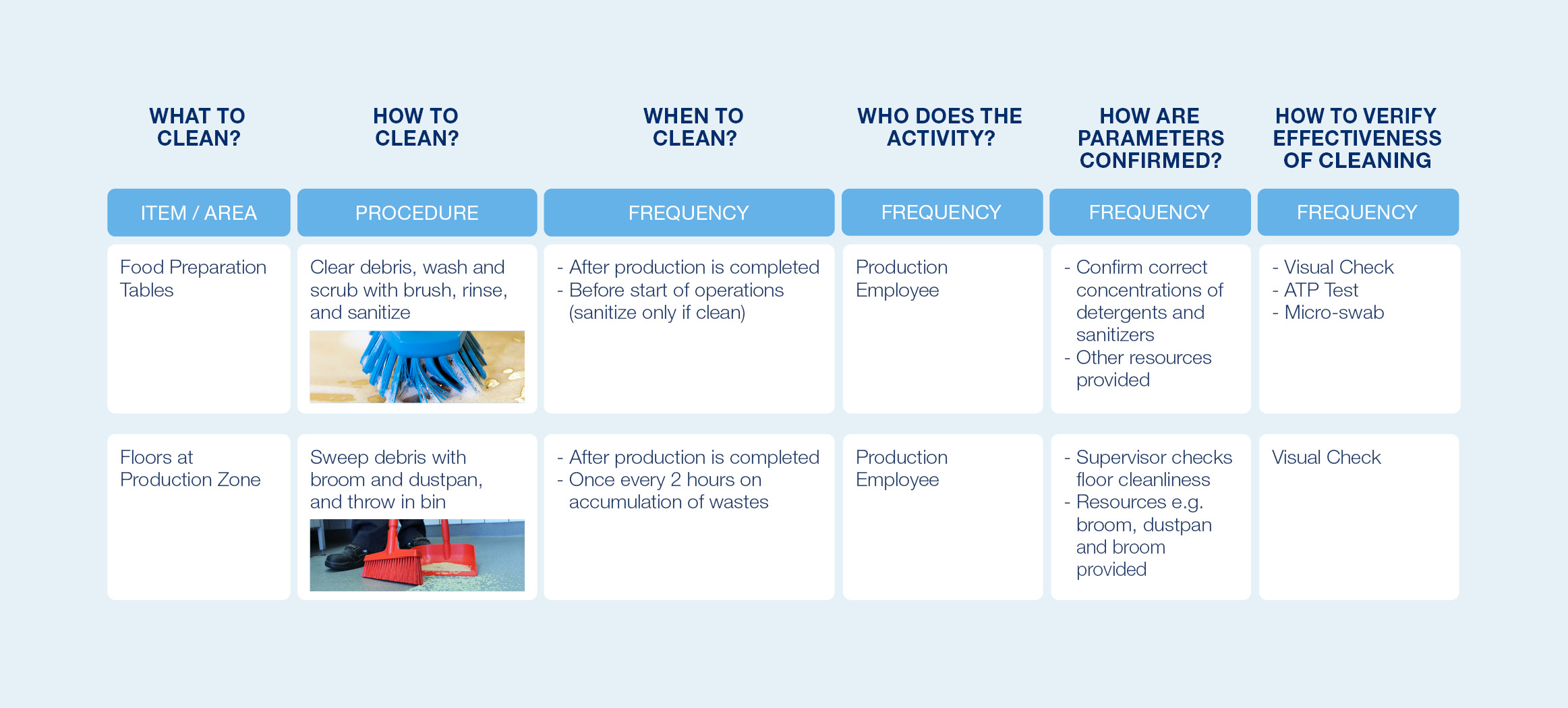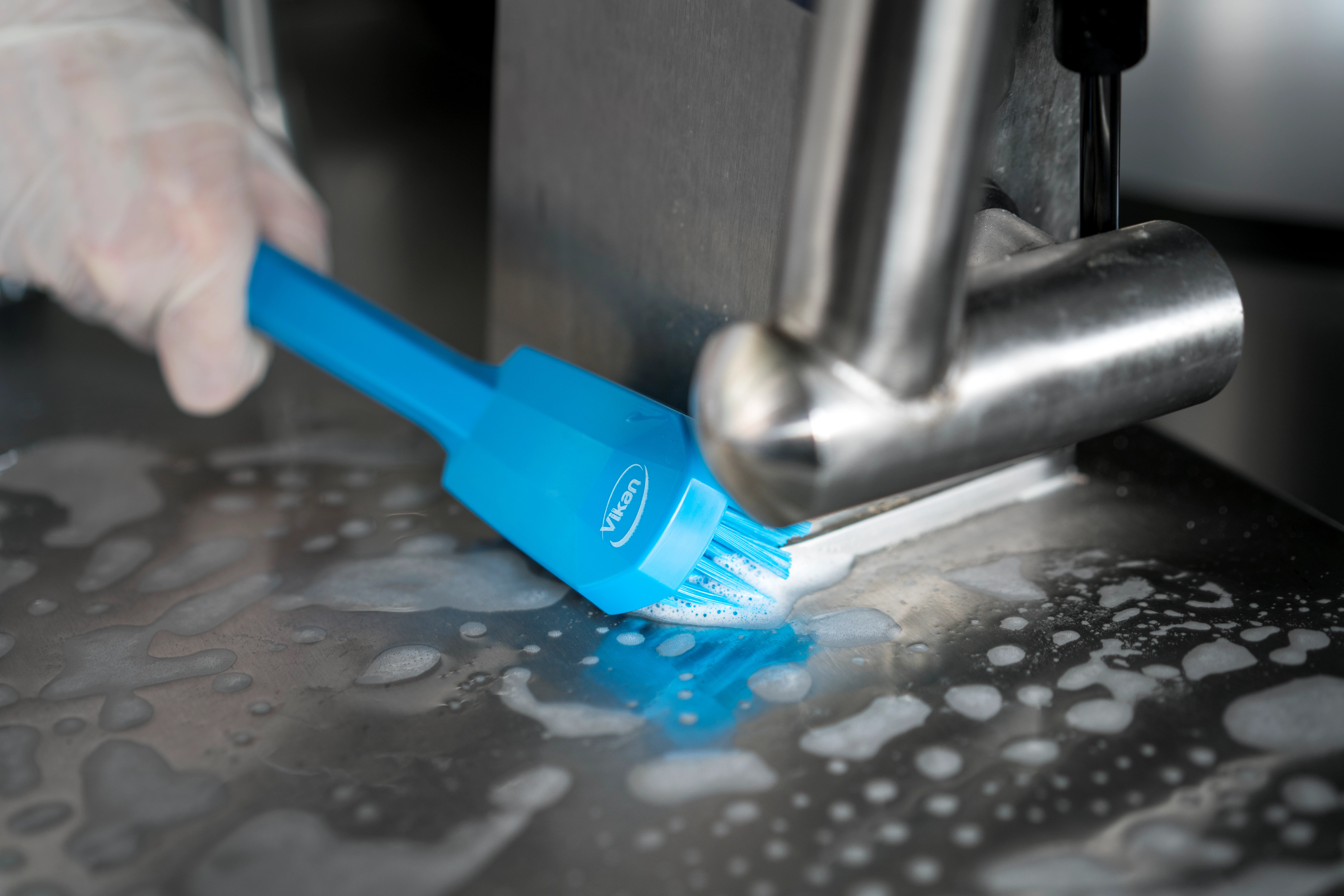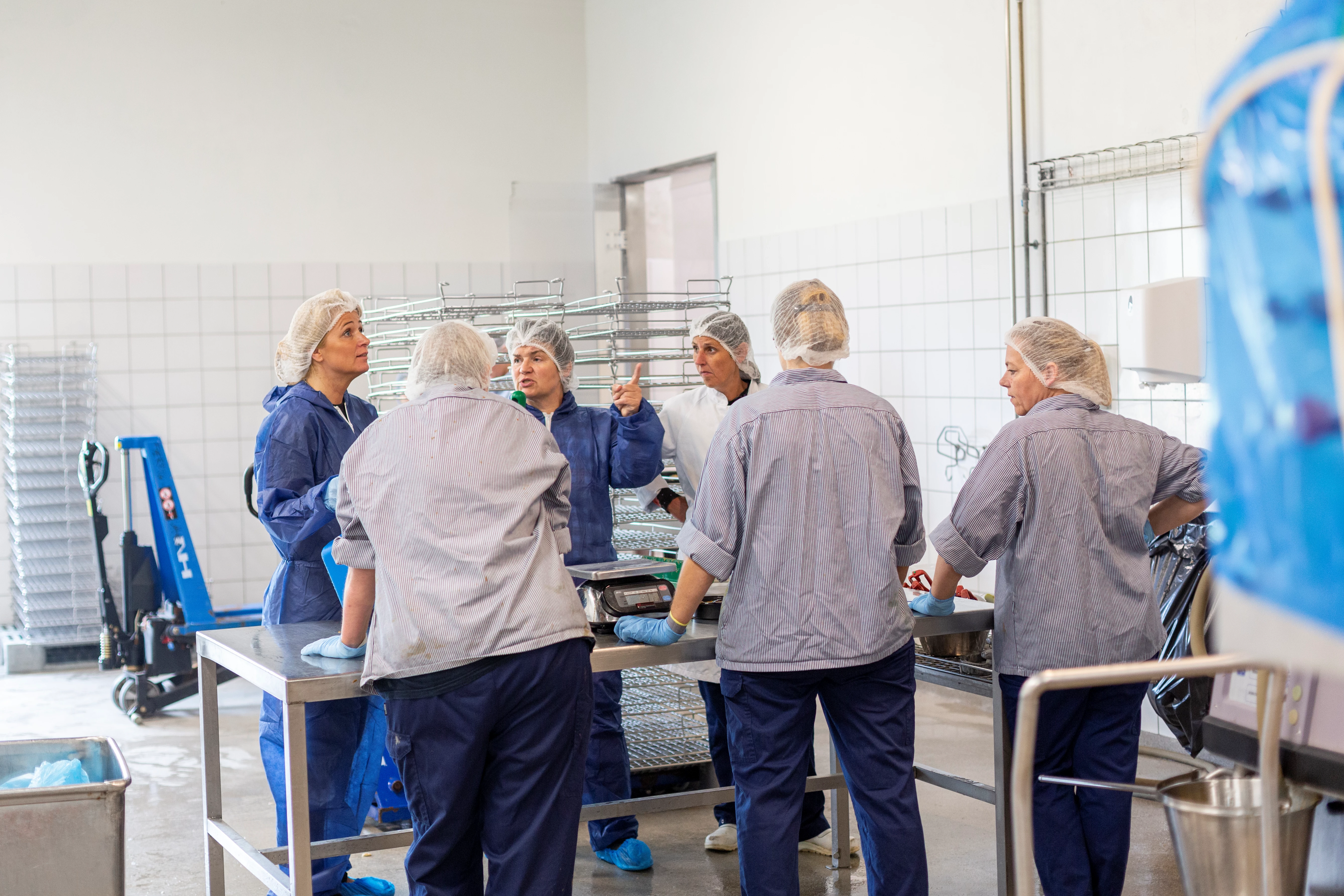ABC’s of Manual Cleaning Part IV: Where and When to Manual Clean?
In part three of our manual cleaning blog series, we briefly explained how to implement a typical manual cleaning process. In part four, we'll explore the basics of identifying areas that require cleaning and determining how often they need it. These steps are essential for maintaining a consistently sanitary environment in food production.
Keeping Your Master Cleaning Schedule Up to Date
Every area in your production environment that could lead to unsanitary conditions if left uncleaned should be systematically identified. This is known as risk-based cleaning. A standard cleaning schedule usually includes all aspects such as facility maintenance, equipment, tools, clothing, amenities, and external areas. An example of these elements is shown below:

Any changes to the schedule must be clearly justified and reflected in procedures, training programs, and reviews.
Revisiting the 'Level of Clean' for Environmental Surfaces
It's important to ensure that cleaning has been done effectively. The 'Level of Clean' can fall into one of the following categories:
- Sanitary: Surfaces must be free of pathogens. Micro-swabbing and testing are typically used for verification.
- Micro-clean: Surfaces must be pathogen-free and also have reduced spoilage organisms, improving both food quality and hygiene.
- Allergen-clean: Surfaces must be cleaned to remove allergens. Rapid test kits help verify the presence or absence of specific allergens after cleaning.
- Quality-clean: Surfaces must be free of debris and dirt that could affect product quality. ATP swabs are commonly used to check cleanliness, with thresholds set for compliance during audits.
"As-needed" or "emergency cleaning" is not generally acceptable. Scheduled cleaning of food contact surfaces (FCS) and non-food contact surfaces (NFCS) should be the norm. FCS, like equipment surfaces, must be regularly cleaned and disinfected before and after use. NFCS, such as drains and wall junctions, should also be cleaned because contaminants can easily transfer to FCS.
To control pathogens like Listeria monocytogenes, a "Seek and Destroy" approach can be used. This involves finding Listeria in unexpected places and using controls like regular cleaning, disinfection, scrubbing, and biofilm removal strategies to reduce its presence in hard-to-reach areas.
Creating Your Manual Cleaning Plan
Cleaning isn't a one-size-fits-all solution. Different areas may require specialized tools, as illustrated below:

What’s Next?
To achieve the best results from manual cleaning, it's crucial to assign responsibilities and ensure tasks are effective and efficient. In our next blog, we’ll discuss who is responsible for planning, conducting, reviewing, and maintaining cleaning programs and tasks.
Selected References:
- Remco (2020). The Role of Manual Cleaning in Biofilm Prevention and Removal. Whitepaper Link: https://go.remcoproducts.com/biofilms
- U.S. Food and Drug Administration. (2017). Draft guidance for industry: control of Listeria monocytogenes in ready-to-eat foods. Fed. Register, 82, 4803-4805.
Recent blog posts

ABC’s of Manual Cleaning - Part I: Why is it important?
This blog series will go over the various ins and outs of manual cleaning and why it is necessary for the safe production of food.
ABC’s of Manual Cleaning - Part II: What does Manual Cleaning Involve?
In many cases, manual cleaning is the most practical option, especially when dealing with complex equipment.
ABC’s of Manual Cleaning - Part III: How does Manual Cleaning Work?
In this third part of our six-part blog on cleaning, we address the key question: how is the manual cleaning process typically implemented?
Recent blog posts

ABC’s of Manual Cleaning Part V: Who is Responsible for Manual Cleaning?
In part five, we focus on understanding the departments involved in the cleaning and sanitation process within a food facility.
ABC’s of Manual Cleaning Part VI: Regulatory and Standards Expectations Regarding Manual Cleaning
In this final blog of the series, we look at EU and U.S. food safety regulations, key industry standards, and best practices for sanitation.
Sofas OUTDOOR,large outdoor sofa,corner garden sofa set,garden sofa set sale
Foshan Jianermei Furniture Co., Ltd , https://www.minottiitaly.com